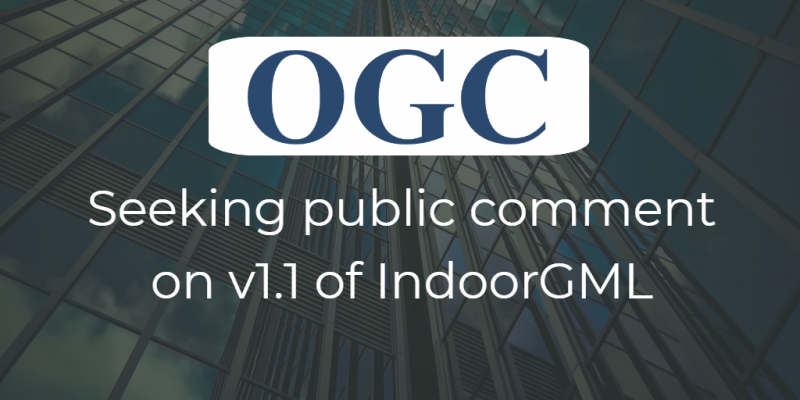IndoorGML v1.1 introduces a new feature for level (i.e. storey or floor) information to meet requirements from many indoor spatial applications

The Open Geospatial Consortium (OGC) is seeking public comment on the v1.1 update to the IndoorGML standard.
The goal of IndoorGML is to represent and allow for exchange of the location information required to build and operate indoor spatial services such as indoor navigation systems. Several standards, such as CityGML, KML, and IFC, have been published to describe 3D geometry and semantics of buildings for outdoor/indoor spaces, but they lack some important features that are specific to indoor spaces. IndoorGML aims to provide complementary and additional encoding features for indoor space. In this respect, IndoorGML is a complementary standard to CityGML, KML, and IFC.
IndoorGML v1.1 introduces a new feature for level (i.e. storey or floor) information as an additional attribute of cell space to respond to the requirements from many indoor spatial applications. IndoorGML v1.1 is fully compatible with the previous version IndoorGML v1.0.
The OGC IndoorGML Encoding Standard was developed to provide a common schema framework for interoperability between indoor spatial applications. These cover a broad spectrum of application areas such as indoor location services, indoor web map services, indoor emergency control, indoor IoT sensors, guiding services for visually handicapped persons in indoor space, and indoor robotics. Cross-platform, vendor-neutral communication of indoor spatial information is essential to meet the market demands of these applications.
The candidate IndoorGML v1.1 standard is available for review and comment on the OGC Portal. Comments are due by 29 November, 2019, and should be submitted via the method outlined on the IndoorGML v1.1 standard's public comment request page.
About OGC
The Open Geospatial Consortium (OGC) is an international consortium of more than 530 businesses, government agencies, research organizations, and universities driven to make geospatial (location) information and services FAIR – Findable, Accessible, Interoperable, and Reusable.
OGC's member-driven consensus process creates royalty free, publicly available geospatial standards. Existing at the cutting edge, OGC actively analyzes and anticipates emerging tech trends, and runs an agile, collaborative Research and Development (R&D) lab that builds and tests innovative prototype solutions to members' use cases.
OGC members together form a global forum of experts and communities that use location to connect people with technology and improve decision-making at all levels. OGC is committed to creating a sustainable future for us, our children, and future generations.
Visit ogc.org for more info on our work.
“
